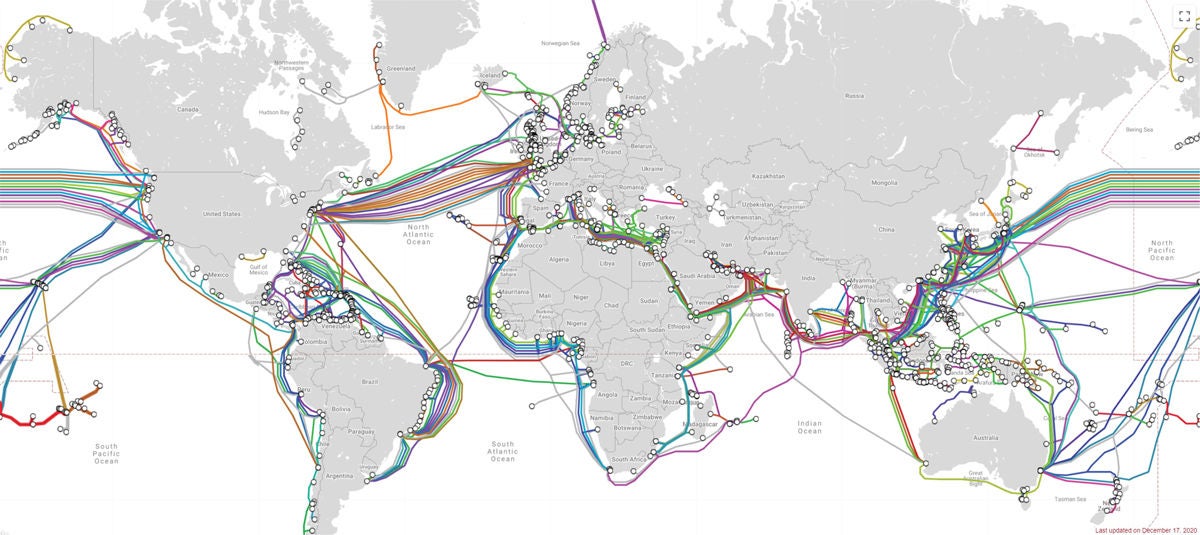EY refers to the global organization, and may refer to one or more, of the member firms of Ernst & Young Global Limited, each of which is a separate legal entity. Ernst & Young Global Limited, a UK company limited by guarantee, does not provide services to clients.

Ireland's strategic position enhances Europe's digital transformation by serving as a key hub for transatlantic connectivity and data security.
In brief
- Ireland's strategic location is crucial for Europe's digital transformation, acting as a transatlantic connectivity hub.
- Security and resilience of subsea cables are critical amidst growing threats, necessitating advanced protective measures.
- Upgrading Ireland's digital infrastructure demands substantial investment and collaboration in a shifting economic landscape.
In this article we discuss the vital role of Ireland in supporting Europe’s digital ambition. Discussing:
- The importance of the global subsea digital network
- Ireland’s role in the global network
- Responding to security threats
- Investing in international connectivity
The importance of global subsea digital network
The Internet has become increasingly important for users, businesses, governments, and the social and economic welfare of countries. It is the lifeline by which we communicate with friends, family, colleagues, and customers.
The Internet relies on subsea cables to function effectively. With over 400 cables carrying more than 99% of international internet traffic, they are the international trade routes of the 21st century. The global economy and digital services are fully dependent on them.
Submarine Cable Network Worldwide

Ireland’s role in the global network?
Ireland occupies an important strategic position, Europe’s last outpost before the vast expanse of the Atlantic Ocean and the lands of Canada, United States of America and the South Americas.
This strategic position is also important in terms of transatlantic telecommunications cables. In fact, the first undersea cable was laid in 1858 by a ship called the Great Eastern, it was a telegraph cable laid between Kerry in Ireland and Newfoundland in Canada.
In March 2021 the European Commission presented a Communication ‘2030 Digital Compass: The European way for the Digital Decade’ which sets a vision for a successful digital transformation of Europe. This vision sets out key milestones along four cardinal points, one of these being “Secure and performant sustainable digital infrastructure”. Ireland has a key role in facilitating this strategy as set out below;
- EU Data Hub: Ireland is a proven and growing location for data centre facilities and world-leading Internet and technology companies. The connectivity networks around the EU can be viewed as four platforms, each of which has a specific geopolitical significance. Ireland’s westerly location is significant on the EU-Atlantic Data Gateway Platform and is a European landing ground for transatlantic cables.
- Transatlantic capacity: There has been an explosion in data demand and online services driven by new internet users, higher consumption of rich content (such as video), and the emergence of cloud services. There is a view across industry that the fibre availability on existing transatlantic cables is not deemed sufficient to meet demand over the next 10 years.
- Island EU Member State: As an island member State of the EU we are fully dependent on subsea cables. Ireland currently has no direct connectivity to continental Europe as all of Ireland’s connectivity transits the UK. The lack of direct connectivity to mainland Europe may be exacerbated by Brexit.
- Ageing infrastructure: Almost half of the submarine cables that currently land in Ireland have been in operation for twenty years or more and are close to the end of their design lives.
Responding to security threats
In February 2022, Russia conducted a naval exercise southwest of Ireland very close to several submarine data cables. In January 2022, the UK’s Chief of Defence alerted policymakers in an interview that the Russian undersea activities were unprecedented and directly targeted cable systems.
State sponsored threats present not only physical risks from submarines or submersible drones, but also less visible threats from potential high-risk technology vendors controlling and extracting data in transit.
It is in the EU and State’s interest to ensure that its international digital connectivity offers resilience against any events which cause damage to a cable. This can be achieved through increasing capacity and reducing reliance on cables and routes. Additionally, new technology can be deployed to support cable and data surveillance and defence.
The investment challenge
Delivering subsea digital infrastructure requires a significant financial investment and takes years to deploy. Recent industry discussions have been focussed on the issues posed by rising interest rates, fibre and commodity prices, labour costs and economic volatility more broadly.
The infrastructure is often sponsored through consortiums requiring an anchor customer to provide certainty of income. Where telecommunication companies were once were the main owners of subsea fibre, the hyperscalers are increasingly investing in submarine cables both as part of consortiums and as private projects. These partnerships can be complex to put together and many companies struggle to identify who their funding stakeholders are.
Commercially driven cable deployments will also choose the most commercially attractive option, this may not consider political objectives such as diversification of routes, capacity, and other technology requirements. While there has been an expansion of public funding to help with the development of the sector, in particular the Connecting Europe Facility Digital Calls, there is limiting eligibility criteria.
Summary
The explosion in data demand, the impacts of Brexit, an increasing focus on resilience and Ireland’s ‘data-hub’ ambitions has made international digital connectivity a matter of national and European significance. The industry needs to be planning and building new infrastructure on the three main routes i) Ireland to UK, ii) Ireland to North America, and iii) Ireland to Europe. To facilitate this, the Government needs to remove barriers and ensure cross-industry collaboration to increase the commercial feasibility of projects and maximise Ireland’s digital potential.


